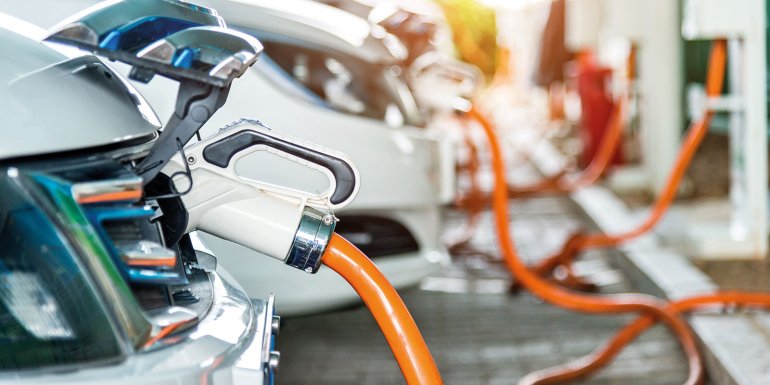Industry opinion: Pressures on the UK’s energy infrastructure

Whitecode’s Managing Director Alex Hill discusses whether the UK’s energy infrastructure is equipped to handle the government’s widespread introduction of new low carbon initiatives.
South Africa’s energy provider Eskom has recently issued statements announcing an urgent increase in the levels of load-shedding, greatly curbing the country’s electricity usage. Load-shedding is a way to distribute demand for electrical power across multiple power sources. A deliberate shutdown of electric power, it is designed to prevent the failure of the whole power distribution system due to insufficient generation capacity. This can be attributed to multiple generation failures of ageing coal plants that cannot meet the electricity demand of the country’s population.
To address this problem, the South African government has been working to shift its energy mix from coal to renewable energy sources such as wind and solar power. Unfortunately, rolling blackouts are still commonplace. While the concept of electricity blackouts is unheard of in the UK, it isn’t inconceivable that we could face this in the future.
Eskom enabled load-shedding at Stage 6 in May, resulting in South Africans being unable to use electricity for multiple hours during the day. Stage 6 is an extreme power-saving measure, allowing up to 6,000MW to be removed from the power grid, leading to power supply cuts in the impacted area 18 times over a four-day period for four hours at a time. Ministers have warned the public to expect unprecedented Stage 7 and 8 shedding due to a severe strain on the country’s electricity supply.
I experienced load-shedding first-hand during my visit to Whitecode’s South Africa office. During my visit, the government planned a two-hour blackout twice a day, with blackouts occurring at different times each day. During this time, mobile phone masts became ineffective, the internet ground to a halt and traffic lights became merely ornamental.
Pressures on the UK’s energy infrastructure
Although the UK is unaccustomed to such severe power-saving precautions, it’s worth considering if we could be going the same way as South Africa. In 2021, the UK government announced that from 2030 new petrol and diesel cars will no longer be sold in the UK to help reduce carbon emissions. While this move towards reducing tailpipe emissions is commendable, can the UK’s infrastructure sustain nationwide electric car charging demand? Just months ago, electricity companies were paying people to switch off as a solution to an electricity capacity crisis in the middle of winter. What will next year look like for the UK as the number of electric vehicles on the road increases?
Likewise, under the Future Homes Standard, new homes will only be able to install energy-efficient heating systems to produce 31% lower emissions compared to the current levels. After 2025, gas boilers cannot be installed in new build residential properties, with the government aiming for a target of 600,000 heat pump installations per year by 2028. While this looks to solve the carbon emissions issue associated with heating, it could cause a significant issue for the UK’s electricity supply.
Potential solutions
South Africa is forced to switch off its electricity despite the detriment to the economy, with businesses unable to trade. Longer term, South Africa requires a greater capacity to generate dispatchable power. While alternative energy sources such as solar and wind power are advantageous, South Africa’s power demand greatly exceeds its supply and requires energy that isn’t dependent on capricious environmental conditions. More dispatchable power could potentially be delivered via gas plants, batteries or pumped storage hydropower.
Many people have implemented diesel generators as a solution, while others with adequate space have adopted batteries and solar photovoltaic (PV) systems, which are more sustainable options. Given the harmful side effects of diesel generators, many advocate for batteries being mandatory in each home, with a PV array to charge the batteries. Personally, I am an advocate for batteries and a solar PV in each home as a reliable and sustainable solution. However, others back the use of cars as batteries, with dual use car house systems being trialled. Whatever the solution, heightened innovation in this area could be a precursor of forced load-shedding in the UK.
While load-shedding in the UK is not a foregone conclusion, sufficient supply for hundreds of thousands of electric vehicles and heat pumps seems ambitious to say the least. We would do well to heed South Africa’s load-shedding situation as a cautionary tale and implement additional streams of power generation before we find ourselves in a situation where forced electricity shutdowns become the norm.
For more visit bit.ly/Building_EV and bit.ly/PodPoint_EV
Part S electric vehicle charging
Building Regulations Part S (England) has been introduced to drive the installation of adequate electric vehicle (EV) charging point infrastructure within developments. It anticipates up to 145,000 extra charging points will be installed across England each year up to 2030. Part S came into force on 15 June 2022. It does not apply in relation to building work where a building notice or full plans were deposited with a local authority before 15 June 2022, provided that the building work started before 15 June 2023.
Every new home with associated parking requires an EV charge point. Where there is a renovation of residential buildings with ten or more dwellings, there must be at least one EV charge point for each dwelling, with associated parking and cable routes in all spaces without charge points.
Similarly, new non-residential buildings with more than ten parking spaces must have a minimum of one charge point with cable routes for one in five of the total number of spaces, and any non-residential buildings undergoing major renovation with more than ten parking spaces will require the same. To prevent prohibitive costs, Part S provides that the average connection cost of each EV charge point is capped at £3,600. Where the connection cost is greater than the cap, the maximum number of EV charge points before the costs for each exceed £3,600 should be installed.
Part S further provides that where installation costs exceed 7% of the total costs of a major renovation, then the residential building is exempt from the requirement to install any EV charging points. There is still a requirement to install cabling to the associated parking spaces, except where the cost of those would exceed 7% of the total costs.
 Alex Hill has a first-class honours degree in energy engineering and joined Whitecode Consulting in 1994 as a trainee engineer. He has Dual Chartered Engineer (CEng)Status with the Chartered Institution of Building Services Engineers (MCIBSE) and the Institution of Gas Engineers and Managers (MIGEM). He is a former member of the National Engineering Specification Advisory Board, where he wrote the residential work sections for the Industry Standard Specification.
Alex Hill has a first-class honours degree in energy engineering and joined Whitecode Consulting in 1994 as a trainee engineer. He has Dual Chartered Engineer (CEng)Status with the Chartered Institution of Building Services Engineers (MCIBSE) and the Institution of Gas Engineers and Managers (MIGEM). He is a former member of the National Engineering Specification Advisory Board, where he wrote the residential work sections for the Industry Standard Specification.






